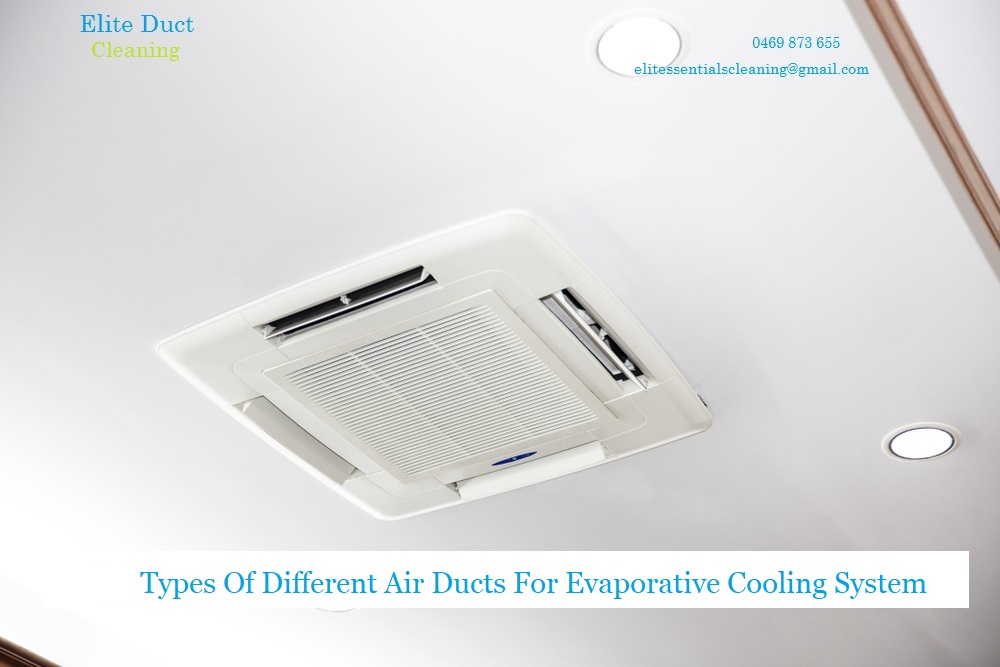In general there are two major kinds of ductwork: Rigid and Flexible. The Types Of Air Ducts your home requires will be contingent on the specific heating. And cooling requirements that can be determined through the help of an HVAC expert. These are the various kinds of ductwork along with their advantages and disadvantages.
Types Of Air Ducts
Commonly referred to as flex duct, this type of air duct is created by covering wire coils with a plastic liner and fiberglass insulation. F inside a vapor barrier that is placed on the outside. It’s often used in spaces where rigid ducts cannot be placed or to connect rigid ductwork to the supply air register. While convenient and quiet, it’s relatively energy inefficient, prone to kinks and bends that impair airflow, and easily damaged. It should be used sparingly.
Rigid Ductwork
The second category of ductwork is rigid ductwork. Rigid ducts can be different sizes and made from different materials, and they can be either rectangular or cylindrical. Because the ducts are rigid, they do not have the risk of kinks or bends restricting airflow and, unlike flexible ducts, they cannot be torn or punctured. However, rigid ducts cannot be easily used in tricky spaces. There are three main types of rigid ductwork: sheet metal ducts, fiberglass lined ducts, and fiberboard ducts.
Your ductwork plays a major role in your heating and cooling system’s ability to perform efficiently in the variable Delaware and New Jersey climate. Whether you’re having new ducts installed or old ones repaired, it helps to know something about your options.
Sheet metal —
This is the most common type of duct cleaning in melbourne. It’s made from galvanized steel formed into a rectangular or round shape. Some are lined with fiberglass insulation to increase their energy efficiency and reduce their noisiness. Duct sections are joined by sliding them together. Elbows, angles, and other fittings are also used. Joints are prone to air leakage, so they should be tightly fit and sealed with mastic.
Fiberglass duct board —
These ducts are made of fiberglass boards. They’re cheaper than sheet metal and carry less noise from the furnace or A/C. On the downside, they’re also less durable, more susceptible to damage by pests such as mice, and more likely to develop mold. They’re most commonly used to create the duct system’s main trunk lines from which the smaller lines branch off as they head out to individual rooms. Connections are usually sealed using UL 181A listed tape.
Flexible Duct
Flexible ducts are typically round tubes made up of steel wire helixes covered in flexible but durable plastic. Most flexible ducts are also encircled by insulation to keep the air at the temperature it should be. This Types of Air Ducts is the easiest to install, and it is the second least expensive. Flexible ductwork is the best type of ductwork to use in tight or awkward spaces where rigid ductwork would be too difficult to install. Because these air ducts are flexible, they can bend around fixed structures to work in almost any space. However, flexible ducts are susceptible to kinks and bends that can restrict airflow and diminish the efficiency of the HVAC cleaning system in Melbourne. Airflow can also be somewhat reduced by the ridges on the inside of the ducts.
Another advantage of flexible ductwork is it is great for air quality. Because the ducts are made of plastic instead of the fiberglass that makes up some rigid ducts, no dangerous particles are released into the air, meaning fewer air pollutants to breathe in. This plastic is also resistant to mold and rust, which means air quality stays clean for much longer. Flexible ductwork has less potential for leaking air from your HVAC system than rigid ductwork, although it is more susceptible to being punctured.
Also check: Duct Cleaning in Toorak

